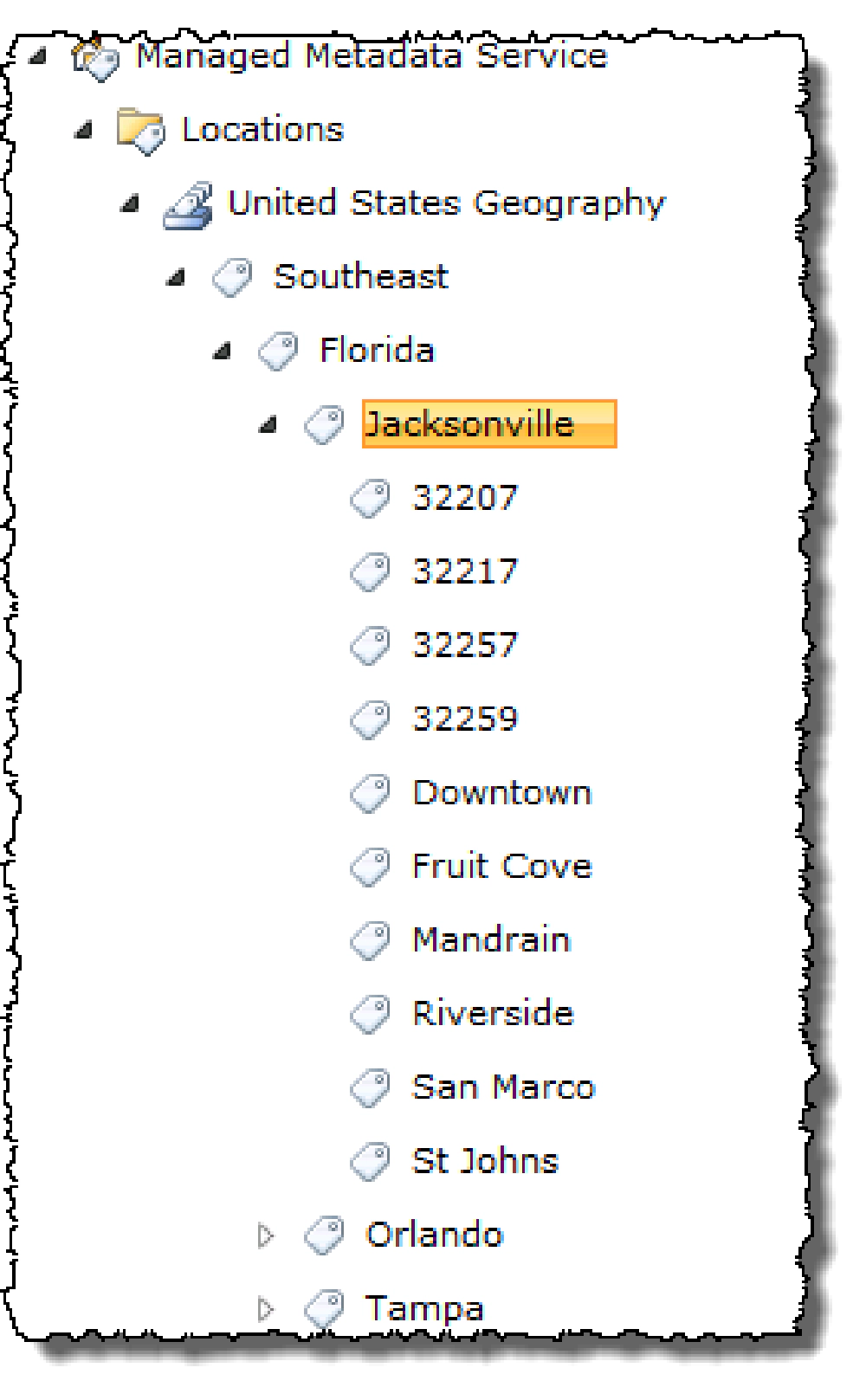First, metadata is simply using data to describe some other data or content. Man, I really hate that definition. Basically you’re describing something else. These descriptors can be used to better categorize & classify the content for future search operations.
SharePoint has always had metadata on content. Columns in lists and libraries describe their own content. So what’s new in SharePoint 2010?
Microsoft added this new service application called the Managed Metadata Service application (MMS). This service application essentially has three offerings:
- Taxonomies
- Folksonomies
- Syndicated content types
Unfortunately you won’t see the first two terms in the product while they are generally accepted industry terms. Let me quickly explain each of these. By the way, when I say “spaka” below what I mean is “in SharePoint, this is also known as” to translate what these things really are into what they are called in SharePoint.
Managed Metadata Service application instance (spaka: term store)
When you see the phrase “term store” that is referring to a specific MMS instance. This is what provides the three things that follow in this post (taxonomies, folksonomies & syndicated content types).
Taxonomies (spaka: Term Sets)
A taxonomy is a bunch of words or phrases (spaka: terms) that are organized in a hierarchical structure. SharePoint does this using Term Sets. These term have a submission policy that is set to Open or Closed. An open term set is one where not only the librarians/admins can manage the terms in the set, but users can also contribute. Conversely a closed term set is one where users can not contribute terms to the hierarchy. Each term set contains Terms which can contain child terms as well as the following:
- Synonyms / aliases: You can have a term “New York” and then aliases “JFK”, “LGA”, “ERW” for the local airports. Then users can type any of the four things and it will resolve to New York in selection & search.
- Multilingual: If you have language packs installed, you can create translations of the term which essentially acts like an alias.
So how can you use term sets? You can use them with Managed Metadata columns in lists and libraries where users can pick a term for a column in the list item/document. These columns can then be used in the metadata navigation, filtering and search solutions.

Managed Metadata
Folksonomies (spaka: Keywords)
Similar to terms in a taxonomy, terms in a folksonomy can be used to tag content in libraries. However what is very different is that these lack any organization (no hierarchy, just a bucket of terms). They also lack the capability to have translations or synonyms. Anyone can add terms. Each web application has one of the MMS’ it’s linked to flagged as the default MMS instance for that web app and it’s site collections. This default MMS instance is where all keywords will be stored for that web application. Think of these as something similar to hashtags on Twitter: anyone can create them, you don’t have to use an existing one and anyone else can use what you create.
Syndicated Content Types (spaka: Enterprise Content Types)
SharePoint 2007 introduced the concept of a content type which allows you to define the schema of a type of content & use it throughout a site collection. A common complaint was to be able to reuse these across site collections. To address this Microsoft added to the MMS a process that simply replicates content types from one site collection to other site collections that subscribe to it. Microsoft & SharePoint call these enterprise content types but I call them syndicated types because they are just like regular old content types, there’s just a service that copies & updates them.
When you create a MMS you can specify the URL of a site collection that acts as the hub for the content type publication service. All site collections in web applications connected to the MMS instance can subscribe to those published content types. When one is published it is created as a read only copy in the subscription site collection. This is to ensure they are always the same when they are updated in the future. If you want to customize one, you simply create a new content type that inherits from it and make changes to the child content type.
So that’s basically a wrap up of what Managed Metadata, what the MMS is and what it offers. More to come in this series!